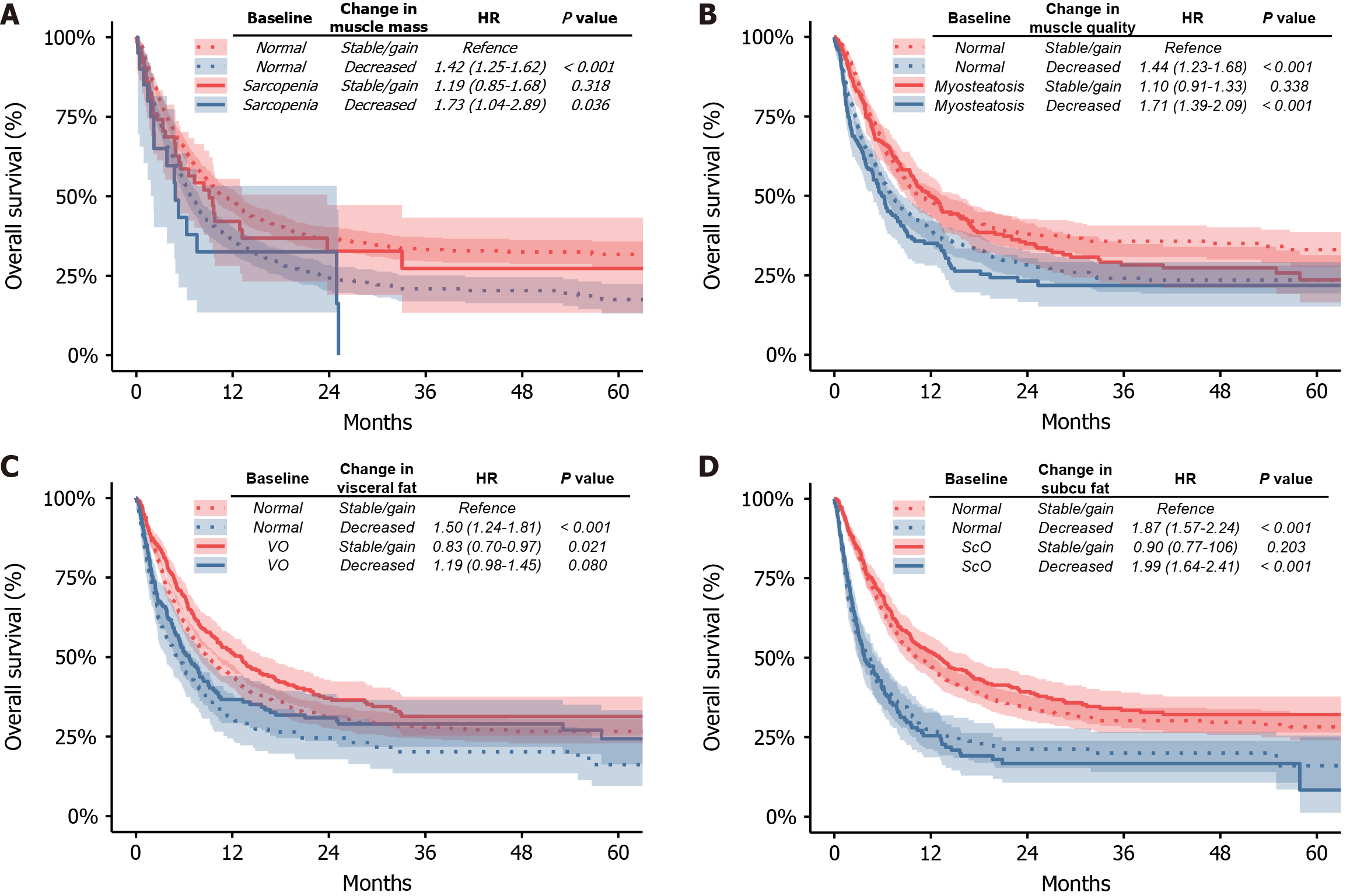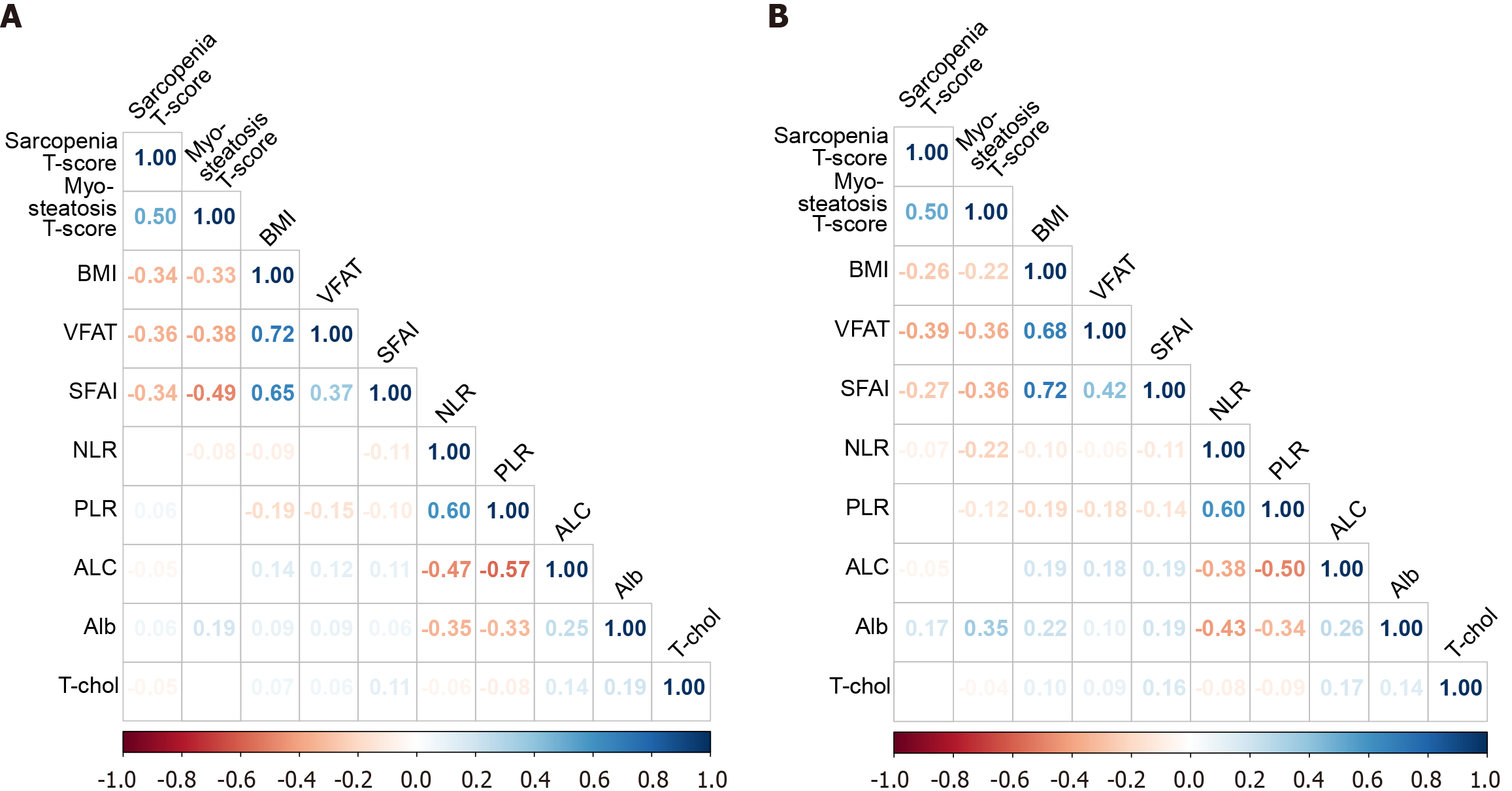Copyright
©The Author(s) 2025.
World J Gastrointest Oncol. May 15, 2025; 17(5): 103479
Published online May 15, 2025. doi: 10.4251/wjgo.v17.i5.103479
Published online May 15, 2025. doi: 10.4251/wjgo.v17.i5.103479
Figure 1 Flow diagram.
CRC: Colorectal cancer; CT: Computed tomography.
Figure 2 Class changes in body composition during treatment.
Percentage changes in the prevalence of abnormal body composition from baseline to after the last systemic chemotherapy were shown. S: Sarcopenia; ScO: Subcutaneous obesity; M: Myosteatosis; mo: Months; VO: Visceral obesity.
Figure 3 Restricted cubic spline curve showing the hazard ratios of body composition parameters and survival.
A: Sarcopenia T score; B: Myosteatosis T score; C: Visceral fat area; D: Subcutaneous fat area index; E: Body mass index. P values are for nonlinearity.
Figure 4 Baseline status and changes in body composition and their association with survival after the last systemic chemotherapy.
A: Sarcopenia; B: Myosteatosis; C: Visceral obesity; D: Subcutaneous obesity. Decrease in the sarcopenia and myosteatosis indices, visceral fat, and subcutaneous fat were defined as sarcopenia T-scores < -0.5, myosteatosis T-scores < -0.5, visceral fat area < -20%, subcutaneous fat area index < -15%, respectively. ScO: Subcutaneous obesity; mo: Months; VO: Visceral obesity; HR: Hazard ratio.
Figure 5 Correlation matrix at baseline, after the last systemic chemotherapy.
A: Correlation matrix at baseline; B: After the last systemic chemotherapy. The numbers shown are Pearson’s correlation coefficients with P values < 0.05. Negative and positive values indicate negative and positive correlations, respectively. Blanks indicate nonsignificant values. Alb: Albumin; ALC: Absolute lymphocyte count; BMI: Body mass index; NLR: Neutrophil-to-lymphocyte ratio; PLR: Platelet-to-lymphocyte ratio; SFAI: Subcutaneous fat area index; T-chol: Total cholesterol; VFA: Visceral fat area.
- Citation: Jeong H, Ko Y, Kim KW, Lee JS, Seo S, Kim SY, Hong YS, Kim JE, Kim TW. Longitudinal changes in body composition during palliative systemic chemotherapy and survival outcomes in metastatic colorectal cancer. World J Gastrointest Oncol 2025; 17(5): 103479
- URL: https://www.wjgnet.com/1948-5204/full/v17/i5/103479.htm
- DOI: https://dx.doi.org/10.4251/wjgo.v17.i5.103479













